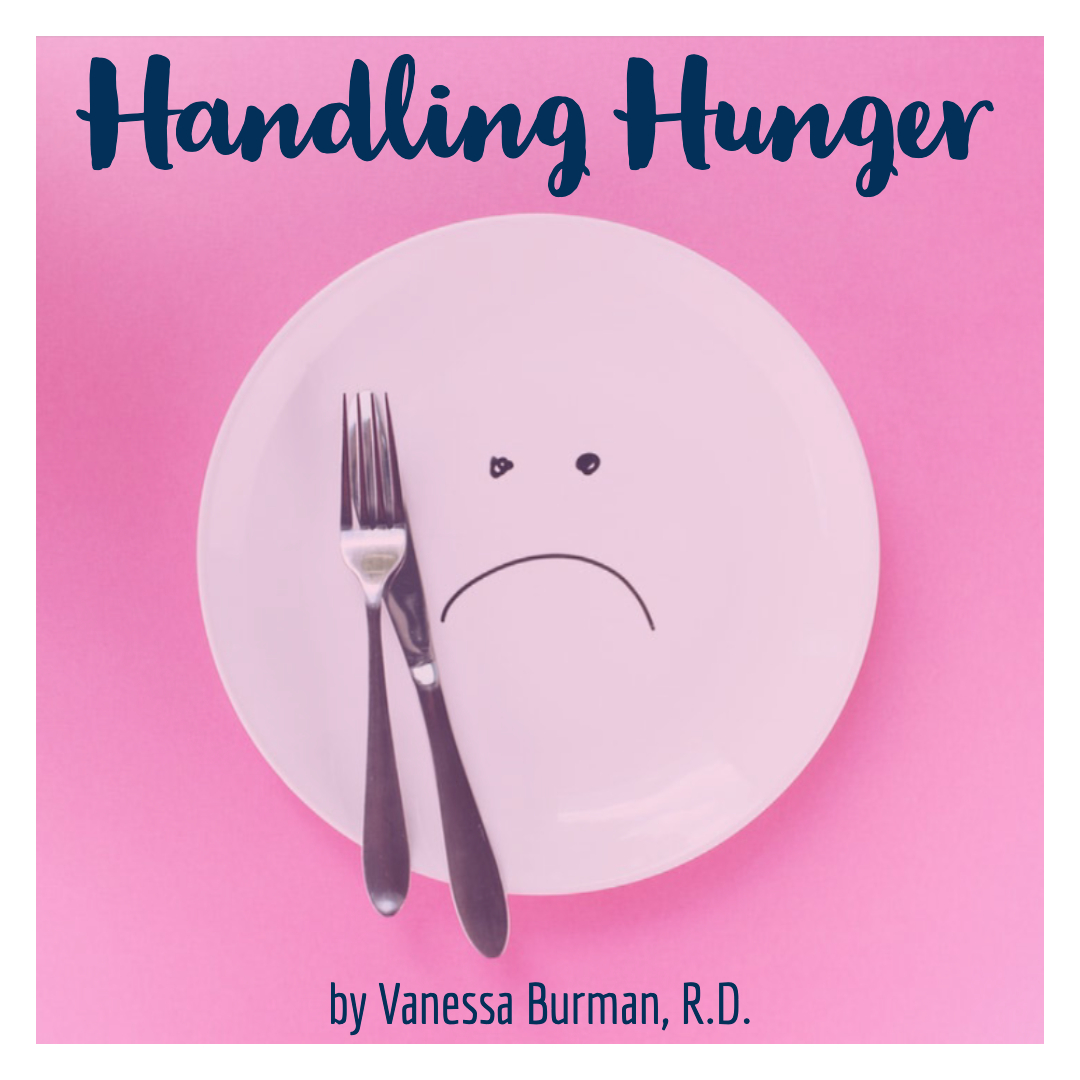If you’ve ever tried to lose weight, have ever missed a meal, or have even just driven by your favorite bakery…chances are you’ve experienced hunger. Hunger can be annoying, distracting, and is frequently blamed as “diet derailing,” yet it’s part of our normal physiology and something that can’t be avoided entirely.
Background
Hunger is defined as a feeling of discomfort caused by lack of food, followed by a desire to eat. Conversely, satiety is the feeling of being full and no longer desiring a meal. Hunger and satiety both stem from the interactions of biological, psychological, and social factors, which are integrated into the biopsychosocial model for hunger and satiety, respectively . We’ve talked about the biopsychosocial model before- mainly in the context of pain – but here we’ll use a similar approach to adequately describe hunger and satiety.
From a biological standpoint, a plethora of different hormones (e.g. ghrelin, leptin, nPYY, CCK, etc.) and neural inputs (e.g. nerves sensing how distended the stomach is or isn’t) provide data to the brain about what’s going on with respect to energy balance. Additionally, genetic and developmental factors influence the signal these hormones and neural inputs send to the brain in many different ways such that we’ll discuss in a future article. Conversely, things like blood sugar and insulin levels are not strongly predictive of hunger or satiety when within the normal physiological range. Suffice it to say, there are substantial biological inputs into both hunger and satiety.
From a psychosocial standpoint, hunger and satiety are influenced by social cues, cultural norms regarding eating behaviors, circadian cues, moods, education levels, socioeconomic status, and other “non-biological” factors. Low socioeconomic status has previously been shown to increase risk of obesity, but recent research has shown that low socioeconomic status also increases appetite resulting in increased calorie intake and also reduce satiety in response to a test meal in both animal and human studies. As another example, “increased or decreased appetite nearly every day” is a symptom used in the diagnosis of major depressive disorder according to American Psychiatric Association’s Diagnostic and Statistical Manual of Mental Disorders, Fifth Edition (DSM-5). In sum, there are numerous psychosocial inputs into hunger and satiety.
Similar to the biopsychosocial model for pain, the brain integrates all of these inputs to formulate an output, e.g. hunger or satiety. In support of this idea, nearly all anti-obesity drugs that are currently FDA-approved target the brain and- through complex mechanisms- likely reducing the dietary rate of perceived exertion (RPE) to make it easier to comply with calorie restriction and dietary change overall.
When we think of the evolutionary strategy “feast or famine” where hunger meant eat now while food is available because there’s potential for starvation – that strategy applies much less to the developed world we live in today. A person might still interpret a hunger signal as an alarm going off saying, “eat now,” yet that isn’t necessarily what someone should do. Present day foods are cheaper and found in highly palatable forms which can encourage overeating. Food is also more readily available than ever before, so most of us don’t need to act every time we are hungry in order to combat starvation. Whether or not we do act is often a different story.
Because multiple variables influence hunger, not every hunger cue is a legitimate reason to put food into our mouth. If during periods where we are purposefully eating in a caloric deficit we listened to hunger every time it popped up, weight loss would be slim or non-existent. The intertwining effect of hormones, learned behaviors, and hedonic hunger are all reasons why weight loss and maintaining that loss is so challenging.
Moving Forward
Although hunger may be hard to handle, there are a few things you can do to help mitigate and prevent it from fully sabotaging your progress.
1) Choose high satiety foods. Most of your food choices should be high on the satiety index. In a 1995 study by Holt et al on the satiety index of common foods, researchers used white bread as a “control” and set its satiety index at 100. Participants deemed different foods more or less satiating than the white bread and were scored accordingly. The takeaway: eat more high fiber, high protein foods, and less high fat/salt/sugar containing foods. (See Figure 1)

2) Be choosy about the types of foods you bring home. Keep highly palatable foods (candy, chips, baked goods) out of the house if they feel overly tempting. Stock your home with other food options that are lower calorie but more satiating i.e. an apple or other piece of fruit in place of cookies, or air popped popcorn in place of chips.
3) Behavioral changes. Create new habits and replace old ones. Find a routine that you can stick to. Eat breakfast, eat meals evenly spaced throughout the day, and have a significant amount of protein and fiber at most meals. If driving past your favorite fast food joint triggers you to want to stop, consider driving another route.
Thanks for reading everyone. Let me know what questions you have in the comment section below!
References
Tehmina, Amin, Mercer, Julian. “Hunger and Satiety Mechanisms and Their Potential Exploitation in the Regulation of Food Intake.” Curr Obes Rep. 2016; 5: 106–112. Published online 2016 Jan14. (https://www.ncbi.nlm.nih.gov/pmc/articles/PMC4796328/)
Holt SH, Miller JC, Petocz P, Farmakalidis. “A satiety index of common foods.” Eur J Clin Nutr. 1995 Sep;49(9):675-90. [PubMed] (https://www.ncbi.nlm.nih.gov/pubmed/7498104)
Guyenet SJ, Schwartz MW. Clinical review: Regulation of food intake, energy balance, and body fat mass: implications for the pathogenesis and treatment of obesity. J Clin Endocrinol Metab. 2012;97(3):745-55.
Sim, A. Y., Lim, E. X., Leow, M. K., & Cheon, B. K. (2018). Low subjective socioeconomic status stimulates orexigenic hormone ghrelin – A randomised trial. Psychoneuroendocrinology, 89, 103–112.doi:10.1016/j.psyneuen.2018.01.006
Grossman SP. 1986. The role of glucose, insulin and glucagon in the regulation of food intake and body weight. Neurosci Biobehav Rev 10:295–315. https://www.ncbi.nlm.nih.gov/pubmed/3095717
